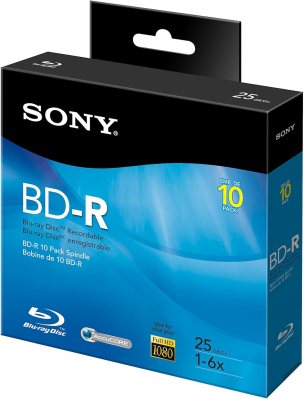The 1990s saw a revolution occur, launched by the CD burner. As prices of writeable media and drives dropped, consumers rushed to duplicate games, create their own mix CDs, and backup their data on optical disc. It was a halcyon time.
Fast forward to today, and we’re very much on downward curve when it comes to optical media use. Amidst ever-declining consumer interest, Sony has announced it will cut production of writeable optical media. Let’s examine what’s going on, and explore the near future for writable optical discs.
Sony’s End

Sony’s plant in Tagaze, Japan was the home of its optical disc manufacturing operation. The Japanese company has announced there will be 250 jobs lost out of 670 at the plant due to the end of writeable media production. The decision is being made to curtail production across CD, DVD, and Blu-Ray lines.
Notably, though, it’s believed this will not affect the production of pre-recorded pressed media, at least in the short term. However, reports in the Japanese media suggest the industrial giant will “gradually cease production of optical disc storage media,” including Blu-Ray products.
Regardless, for now, you can expect music, games, and movies to continue to be released on physical media. Local stores are still full of DVDs and Blu-Rays, and you can even get Taylor Swift and Doja Cat albums on CD if your car still has a CD player.
Plus, the big stores still carry titles for those gamers still hanging on to the disc-drive versions of modern consoles. Still, ask the average PC gamer the last time they handled an optical disc and they’ll probably say “What’s an optical disc?” That market moved on a long time ago.
The Disc World
While Sony is leaving the industry, other manufacturers remain in the market. Consolidation means that many brands are all manufactured by the same handful of companies. Notably, Taiyo Yuden, a company that worked on the invention of the recordable CD, checked out of the market in 2015. Mitsubishi and Verbatim went the same way. All three ended up sold to Taiwanese firm CMC Magnetics, which produces discs commonly rebranded as Memorex, Imation, HP, TDK, and others. The other remaining major player is Ritek. Both companies produce various lines of CD-Rs, DVD-Rs and DVD+Rs, and BD-Rs and BD-REs.

You’ve probably got one question still itching away in your brain. Who is actually using optical media in this day and age? Most consumer use cases have dwindled to almost nothing. Few of us burn CDs for our cars anymore, now that aux ports, Bluetooth, and USB ports are all readily available. Similarly, moving data via sneakernet is more easily done by simple flash drives or larger portable hard drives, without the usual write-once limitation.
As it turns out, though, optical media remains a great solution for long-time archival use—if you get the right discs. Cheap CD-Rs and DVD-Rs are still a terrible choice, of course. However, so-called M-Discs are designed specifically for this task. Typically available in DVD and Blu-Ray formats, they’re so-called for their ability to store data for “up to 1000 years” according to some manufacturers. They achieve greater longevity through the use of a highly-stable inorganic glassy carbon layer which stores the disc’s data. This is far more stable than the organic write layers used in most writeable optical media. It’s believed this material could last for up to 10,000 years if stored in highly stable conditions. Sadly, the polycarbonate layer on top is only expected to survive for 1000 years at best.
When it comes to high-capacity cold digital storage, it’s hard to go past optical media. Tapes can compete on cost and data density, but falter in longevity. Where an M-Disc might last 100 or 1000 years, a tape might last 30 years at best. Recent users include members of Reddit’s r/DataHoarder community and state government authorities. Basically, if you’ve got a lot of data you need to keep for a long time, optical might appeal to you.

There are also some hopes that optical media could storm back on to the scene in a big way in future. Researchers in Shanghai have recently determined a way to construct an optical disk with that could store on the order of 200 TB, as per The Register. This would be achieved through the use of a nanoscale three-dimensional structure to reach never-before-seen storage densities. At such high capacity, the discs could be competitive with hard disks for certain applications. However, it’s early days yet, and limitations remain, including write speed. It’s not much good having a 200 TB disc if it takes forever to read and write the thing.
While optical media is no longer the mainstream darling it once was, it’s not dead yet. And hey, if vinyl and cassettes can come back in a big way, who is to say where the CD market will be in ten years? Human culture is a strange and wonderful thing.
